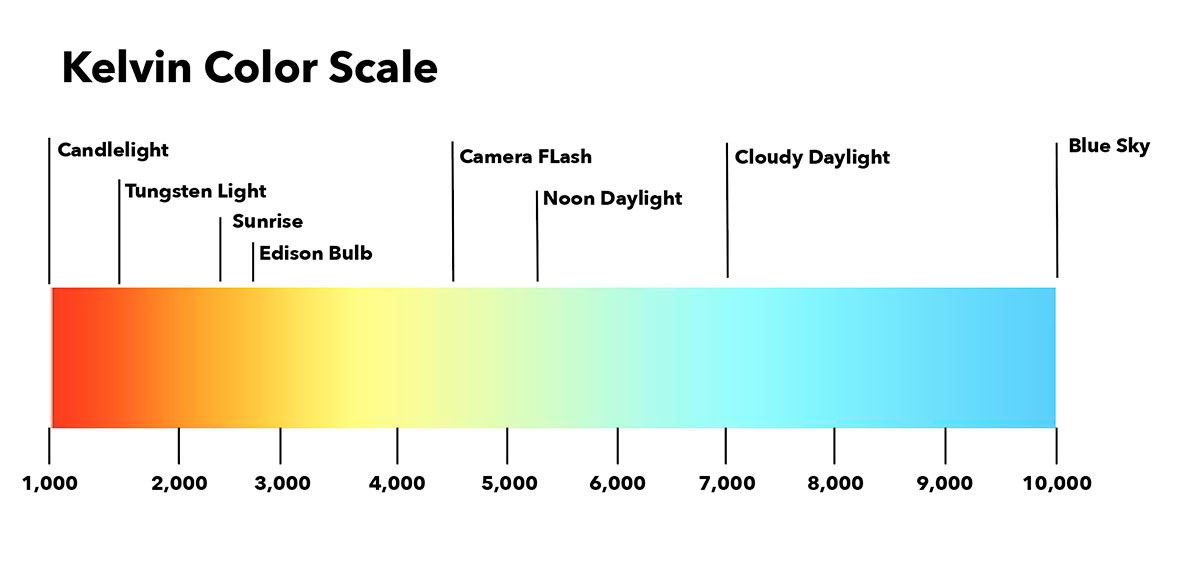Understanding Light or Kelvins and Lumens, Oh My!

Selecting the lighting for your living areas requires more than choosing the right product design for the space you are working with. Understanding the quality of light output from the fixture and how it will affect the tone and mood of the space is equally as important. With this, there are basic lighting descriptors that need to be taken into account and understood. Take Kelvins and lumens for example. These two words sometimes get mixed up. It wasn’t long ago that we did not even know these terms. But now with LED lighting, it has become pretty important. And here is why.
LumensA lumen is the amount of light emitted by a source. The more lumens or the higher the number, the more light output you get. Before LED, we knew how much light a fixture or a bulb would produce by its wattage. Wattage is the measure of the electricity consumed by a fixture or a bulb. Since LED consumes so little electricity this wattage is no longer a good indicator of how much light a lighting fixture will emit, which is why we now go by lumens.

But how do we know what we are getting? If an LED light bulb says it will produce 800 lumens is that a lot? There are plenty of charts available and they are all a little different. LED light bulb boxes will tell you what the bulb is equivalent to. For example, a 9.8 watt LED bulb at 800 lumens is equal to a 60-watt incandescent bulb. When purchasing an LED light fixture you may hear the term “delivered lumens”. What is that? It means that lumens don’t always tell you the whole story. Some manufacturers will put the lumen output based on the amount of light produced before the light source is built into the fixture. Delivered lumens refers to the amount of light emitted from the fixture, not just the LED.
KelvinsThe other thing we never had to be concerned with is the color of the light which is measured in Kelvins. The lower the number the warmer or yellower the light. The higher the number the cooler or bluer the light. What does that mean? Well, if you look at the color spectrum you will see purple on one end and red at the other end, with a spectrum of warm and cool colors in between. While the Kelvin temperature scale was created to help scientists solve physics problems, it also helps in lighting to explain the color of the light that a fixture or a bulb will produce. Manufacturers are now using this on their lighting products. The only time we had to worry about this in the past was when buying fluorescent lights. We could either get a cool white bulb or a warm white bulb. LED is like fluorescent because the light output is not produced by heat like an incandescent bulb.

And like lumens, there are charts like the one above available to show you what certain Kelvin temperatures will look like. And yes, they all vary a little. All you really need to know is that numbers around 2700 will appear a little yellowish and numbers like 5000 will be slightly blue. Numbers in the middle, however, are neutral. Not too yellow, not too blue. Daylight is considered to be in the 5000K – 6500K range,
Understanding these two terms, Kelvins and lumens will refine your next light fixture purchase, giving you the right color and intensity of light you are looking for.
--About the Author: Joe Barone has been with Farry's Lighting + Bath for over 27 years and is one of our go to's when it comes to anything lighting related.





